Journal of Veterinary Medicine And Science
OPEN ACCESS | Volume 2 - Issue 2 - 2025
ISSN No: 3065-7075 | Journal DOI: 10.61148/3065-7075/JVMS
Dereje Adugna1, Eliyas Fufa1, Kebeba Dadi1, Negesa Geda 1and Adugna Girma2*
1Meta Wolkite District Agricultural office, West Shoa, Oromia, Ethiopia.
2Yemalogi Welel District Agricultural office, Kellem Wollega, Oromia, Ethioipa.
*Corresponding author: Adugna Girma Lema (DVM, MSc), Yemalogi welel District Agricultural office. Kellem Wollega, Oromia, Ethioipa.
Received: August 01, 2025 |Accepted: August 22, 2025 |Published: August 30, 2025
Citation: Adugna D, Fufa E, Dadi K, Geda N and Girma A, (2025). “Assessment Of Animal Health Surveillance Data Quality Audit In Meta Welkite District, Oromia Regional State, Ethiopia” Journal of Veterinary Medicine and Science, 2(2); DOI: 10.61148/3065-7075/JVMS/029.
Copyright: © 2025 Adugna Girma Lema. This is an open access article distributed under the Creative Commons Attribution License, which permits unrestricted use, distribution, and reproduction in any medium, provided the original work is properly cited.
Audits of data quality aid in ensuring the accuracy and dependability of the information gathered by animal health surveillance systems. Making well-informed decisions regarding disease management and prevention tactics requires this. Making recommendations and keeping an eye on the monthly data quality audit and any associated gaps are also crucial. The monthly data quality audit was conducted in the Oromia regional state in Meta Welkite district from August 26, 2024 to September 20, 2024, Ethiopia. From the total 44 DOVARs (Disease Outbreak and Vaccination activity reports) which are expected to be sent every month between 2021 to 2024 G.C. A total of 41 reports were found in the Meta Welkite district veterinary clinic. From DOVARs reports assessed there were 0% (0 out of 41 reports) outbreak reports in the past 3 years and 8 months, all reports 100% (41/41) were zero reports. From the expected monthly DOVAR report 93.2% (41/44) were reported, while 6.8% (3/44) were not reported. This indicates that the Meta Welkite district DOVAR report was completely reported. Out of 41 DOVAR reports reviewed 7.3 % (3/41) had Data Quality problems, while 92.7% (38/41) had no data quality problem. Lack of clear objectives for data collection and insufficient training at local veterinary clinics further impede cooperation and produce subpar data on DOVARS reports.
Meta Welkite, Data, Quality, Audit
Good monitoring Accurate planning and the implementation of prompt and suitable actions depend on high-quality data. A collection of pieces of information is called data. It is the components of measurements made during data collection.It is the collected data that creates information when it is further processed which will then improve the knowledge of end users. Knowledge is then evaluated to enhance the researchers' comprehension, which yields wisdom. Making evidence-based decisions for action requires wisdom (Balcha, 2022). Information from animal health surveillance is crucial for taking measures to safeguard the welfare and health of animals.This is also closely linked with the protection of human health. In addition, the detection of hazards in human populations may contribute to the detection of hazards in animal populations (Hoinville et al., 2013).
High-quality surveillance data serves as the foundation for trustworthy information that supports sound animal health decision-making.It is also essential for accurate planning and to apply timely and appropriate interventions. A collection of informational things that were documented during data collecting is called data. It is information when further processed which will then improve the knowledge of end users and the community as a whole. After that, knowledge is evaluated to help researchers better grasp, which leads to wisdom.
Routinely, data quality refers to completeness, accuracy and timeliness of data gathered and that they convey the intended meaning. To guarantee data quality, several principles must be followed. It begins by ensuring that data is gathered in a standard way and need to have standard data collection form. To make wise decisions, you need good data. Clear goals regarding the data that is required, a well-defined plan for the best method of acquiring the data, the use of standardised formats that can capture the necessary data, training on how to collect accurate and trustworthy data, and the storage and retention of data so that it can be managed for future use and used to provide feedback to stakeholders are all important for ensuring high-quality data.
The in-service applied veterinary epidemiology training (ISAVET) field program is designed to link the theoretical data quality audit principles learnt in the classroom with the actual work place animal health surveillance data. The data quality audit in a case study conducted in the public health service of Grand Bassa County, Liberia helped to identify key factors influencing surveillance data quality in the district. In action taken after the quality audit, there was remarkable improvement in the accuracy and completeness of the data produced (Joseph et al., 2015). There is currently no record that can attest to the quality status of district-level livestock sector surveillance data in Ethiopia, despite regular monthly DOVAR reporting.This field work was conducted to assess the animal health surveillance data quality of the district and to provide new significant recommendations which will help to apply basic principles of ensuring data quality. This will finally let them to improve the previous practices and produce quality data which will be an input for other stakeholders.
Objectives
General objective
Specific objectives
Methodology
Field work area and study Period
The Field Work Was Conducted in West Shoa Zone, Meta Welkite District Central Ethiopia from August 26, 2024 to September 20, 2024. It was located at 103 kms, from Addis Ababa and152 kms from Ambo town, the zone capital city. The district was sub-divided into 21 kebeles (3 urban and 18 rural Kebeles) and Also the District had 5 (Five) Veterinary Clinics (1 Type “B’’ and 4 Type “D” veterinary Clinics). The district had 16 (Sixteen) Veterinarians 4 (DVM), 11 AHA (Animal health assistance) and 1 Laboratory Technician). Its annual rainfall ranges from 500 mm to 1000 mm.
Geographically, the district was located approximately between 9o52”34.63” N latitudes and between 38o23”34.49” E longitudes. The altitude ranges from 1500 up to 2780 masl, and agro-ecologically characterized as kola (Lowland-68%), Weyinadega (Mid-Land 27%) and dega (Highland-5%). The lowest and highest temperature of the area is 15 and 32 degree centigrade respectively. The district had total population of 95,104 of whom 46,601 are men and 48,503 women. Livestock population of the district could be described as 150,347 Cattle, 81,600 Goat, 100,521 Sheep, 32670 Donkey, 12,629 Horse, 154 Mule and 62,527 poultry.
Data Collection and Management
Interviews with the clinic's team head, retained DOVARs, and reported data sources are used to gather information about data reporting and quality. In order to interview the Accountable district professionals involved in animal health surveillance, a checklist was created. The criteria for data quality were used to evaluate the received responses. Based on national standards and data quality principles, achieved disease outbreak and vaccination activity reports (DOVAR) from 2021–2024 were examined for quality assessment. Major findings and data quality indicators were tallied and recorded into a Microsoft Excel sheet.
Data Analysis
The recorded data were analyzed and assessed using Microsoft excels and presented using graphs and tables. The responses for the queries obtained from the interviewee were evaluated according to the data quality audit principles.
Results
Information obtained from the interview
Surveillance data collection, source, submission, flow and analysis
The District Farmers, farm owners, and other stakeholders provide surveillance data, which is collected by Kebele animal health personnel and occasionally by the district epidemiology team. For reports on vaccinations and other animal health service activities, they follow a uniform structure. The district was directly notified via phone and hard copy of the illness outbreak that was occurred in the kebele. The district's responsible professional reviews, arranges, and reports the data. The district then submits to the regional agricultural bureau and regional veterinary laboratory using the DOVAR format (Figure 1).
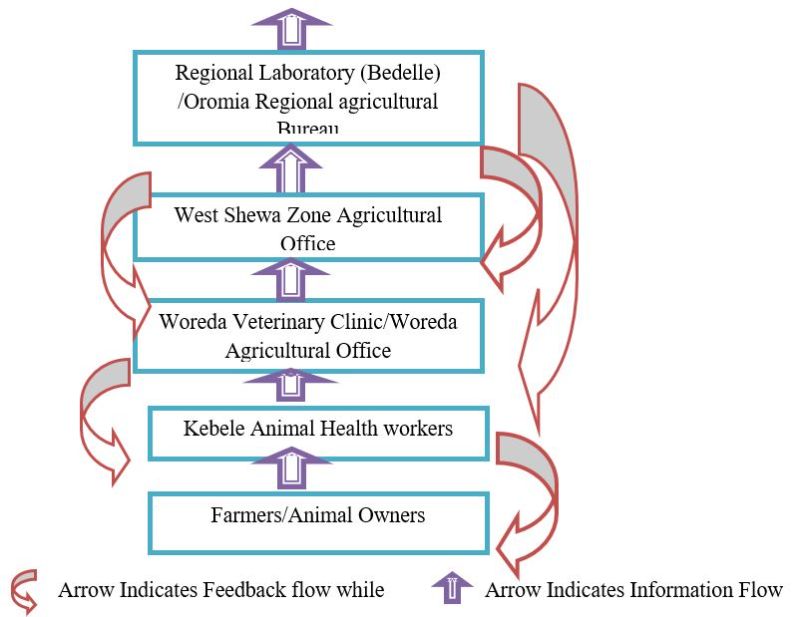
Figure 1: Animal health surveillance data flow in Meta Welkite district
This field work considers DOVAR as a source of surveillance data. The district offices retain these data in their office by hard copy as permanent document. However, the office did not analyze the data they stored in animal-place-time.
At Meta Welkite District, none of sixteen animal health workers received training about surveillance for the past 12 months. This makes the professionals to have little information and makes them do not understand well about surveillance data.
Awareness of data use by stakeholders
As can be observed, surveillance data is used to track the spread of diseases and to provide reports for the Zone; the district does not have any goals for gathering really obvious surveillance data. The Meta Welkite district response focal individuals claim that data gatherers for surveillance are aware of the collected data; however, the district has not performed an analysis as of yet.
Use of laboratory in field investigation/surveillance
Bedelle veterinary regional laboratory is the responsible institution to provide diagnostic support for Meta Welkite district. In the recent time, the district did not submitted sample to the Bedelle Regional laboratory due to peace problem in the district. Therefore, the time required collecting and delivering samples to the laboratory and receive feedback about laboratory test result was too late. This shows that there was weak link and communication between the laboratory and the district veterinary office
Assessment of DOVARs
From the total 44 DOVARs which are expected to be sent every month between 2021-2024 41reports were found in the district veterinary clinic. The available reports were described in the table below:
|
S. N |
Reports |
Years |
Expected Report to be sent |
Sent Report |
|
1 |
DOVARs |
2021 |
12 |
12 |
|
2 |
DOVARs |
2022 |
12 |
12 |
|
3 |
DOVARs |
2023 |
12 |
10 |
|
4 |
DOVARs |
2024 |
8 |
7 |
|
Total |
44 |
41 |
||
Table 1: Available DOVAR formats between 2021 and 2024 in Meta Welkite district
These available reports were assessed in relation to the key data quality indicators. There were 0% (0 out of 41 reports) outbreak reports in the past 3 years and 8 months, all reports 100% (41/41) were zero reports. From the expected monthly DOVAR report 93.2% (41/44) were reported, while 6.8% (3/44) were not reported. This indicates that the Meta Welkite district DOVAR report was completely reported. Out of 41 DOVAR reports reviewed 7.3 % (3/41) have Data Quality problems (have Missing data), while 92.7% (38/41) had no data quality problem. From the Report with Data quality problems (Missing data); one Report had Phone Missing, One report had signature missing and In one Report date was missed.
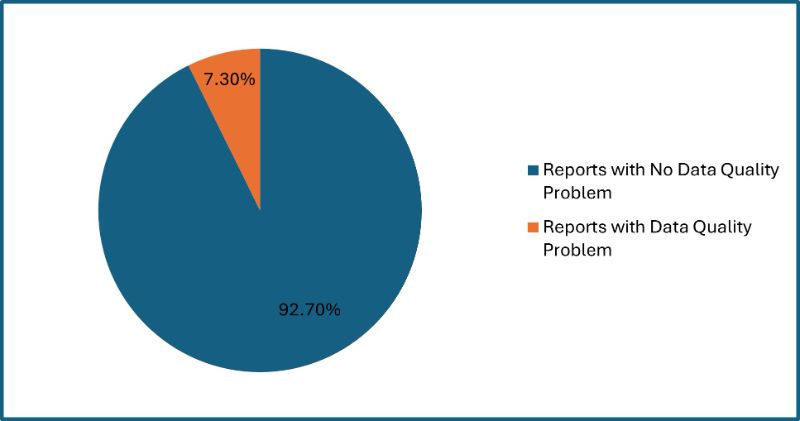
Figure 2: Percentage of Reports with data quality problems and no data quality problem in Meta Welkite district
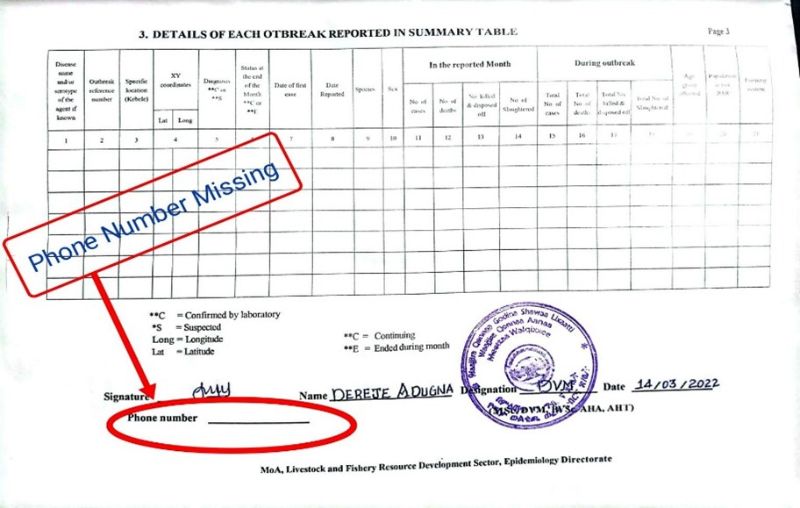
Figure 3: Data Problem due to Phone Missing
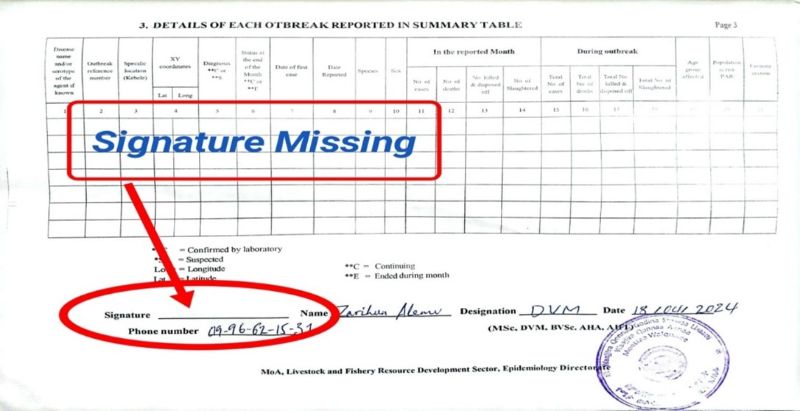
Figure 4: Data Problem due to Signature Missing
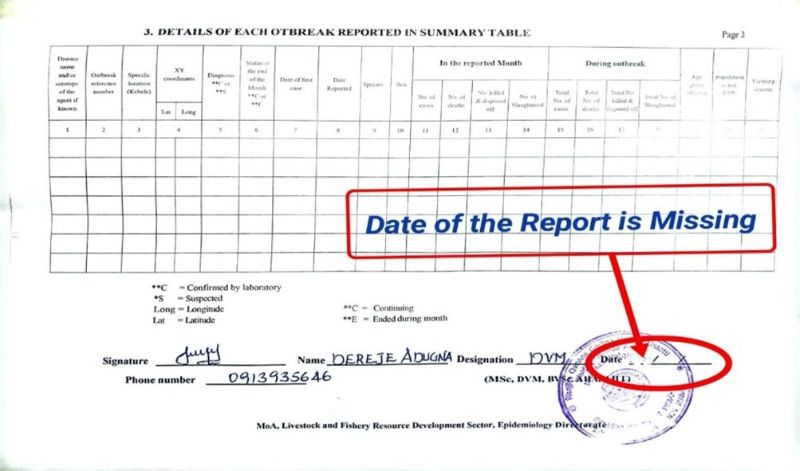
Figure 5: Data Problem due to Signature Missing
The foundation of trustworthy information for wise decisions in animal health is high-quality monitoring data.It is also essential for accurate planning and to apply timely and appropriate interventions. Information gathered during data gathering is referred to as data. It is information that, with additional processing, will enhance end users' and the community's overall understanding. After that, knowledge is evaluated to help researchers better grasp, which leads to wisdom. Routinely, data quality refers to completeness, accuracy and timeliness of data gathered and that they convey the intended meaning. To guarantee data quality, several principles must be followed. First, a standard data collecting form must be used to ensure that data is collected in a consistent manner. To make wise decisions, you need good data. Clear goals regarding the data that is required, a well-defined plan for the best method of acquiring the data, the use of standardised formats that can capture the necessary data, training on how to collect accurate and trustworthy data, and the storage and retention of data so that it can be managed for future use and used to provide feedback to stakeholders are all important for ensuring high-quality data.
The present findings of the animal health surveillance data quality audit through retrospectively accredited documents of DOVAR from 2021 to 2024 in this study revealed that there are limitations on the animal health surveillance data quality of Meta Welkite district. Similarly, quality-based data rely on the data sources, data collection, data recording, management, and reporting systems deserved to output better data quality for decision-makers. There is some recently documented case study in our country Ethiopia especially the Oromia regional state at the Woreda level relating to animal health surveillance data quality audit in the Jimma zone and in Borena zone specifically in Kersa and Guchi Woreda, respectively, which may help us to compare with and discuss the results of the present study.
The present findings of the animal health surveillance data quality audit indicate that the outbreaks of 0% were recorded in Meta Welkite DOVARS assessed in the past 3 years and 8 months until August month of 2024 included this finding is disagree with studies conducted in Karsa Woreda, Jimma zone, Oromia, Ethiopia reported 6.7% their study on animal health surveillance DQA (Balcha, 2022). The outbreak 0% is lower than who reported 77% in their study on animal health surveillance DQA in Guchi Woreda, Borena zone, Oromia, Ethiopia (Abduljami, 2022). The all 100% of the assessed reports were zero reports this finding is in agreement with studies conducted in Karsa Woreda, Jimma zone, Oromia, Ethiopia who reported 93% in their study on animal health surveillance DQA (Balcha, 2022)
The obtained targeted data quality variable is missing data; inaccurate data and problem of timeliness in the assessed DOVARs of Meta Welkite agricultural office disagree with who reported in their study on animal health surveillance DQA in Karsa Woreda, Jimma zone, Oromia, Ethiopia (Balcha, 2022). 7.3% of inaccurate data is recorded in the Meta welkite district, but lower than (42.8%) of inaccurate data reported in Guchi Woreda, Borena zone, Oromia, Ethiopia, and 66.6% reported in Karsa Woreda, Jimma zone, Oromia, Ethiopia. The monthly animal health surveillance data quality reports must be gathered by the Woreda local area AHA or the local area kebele administrators. The animal health assistant then calls the district agricultural offices to forward the information. The DOVARS documents are kept in a secure location, but there is no data analysis on the district’s animal-place-time relationships.
The Meta Welkite district surveillance system must guarantee appropriate data collection and analysis, enhance the quality of animal health monitoring data, and correctly identify information that is filled in. The absence of Poor data quality is a result of inadequate knowledge of the usefulness of the data, inadequate training, and improper data collection methods. Collaboration is further hampered because poor data on DOVARS reports are the consequence of the lack of proper training in local veterinary clinics and clearly defined objectives for data collecting. Depending on the above conclusion, the following recommention was forwarded to Meta Welkite district Agricultural office animal health team:-